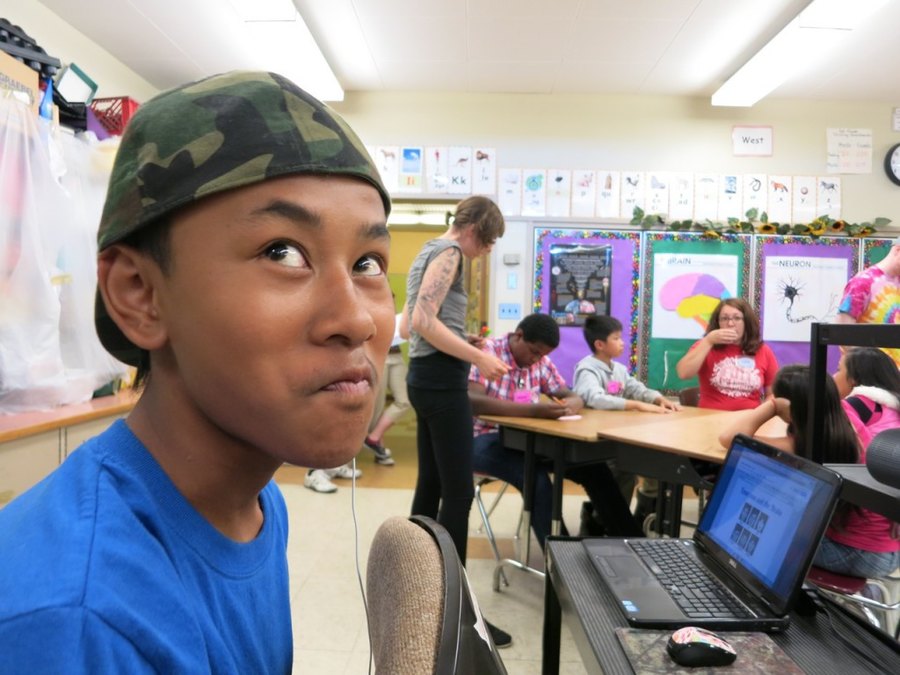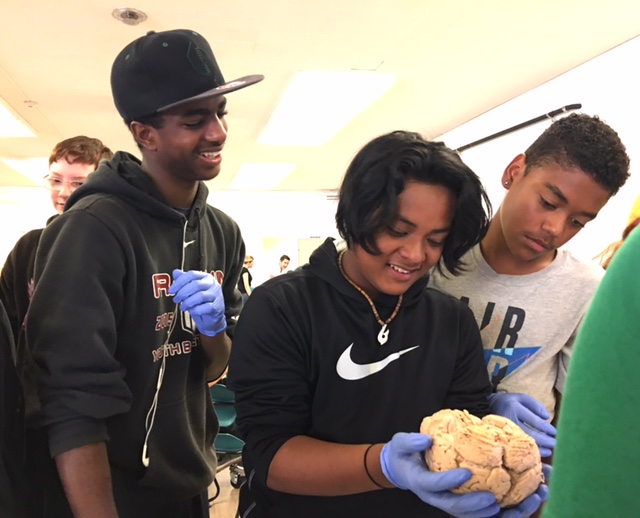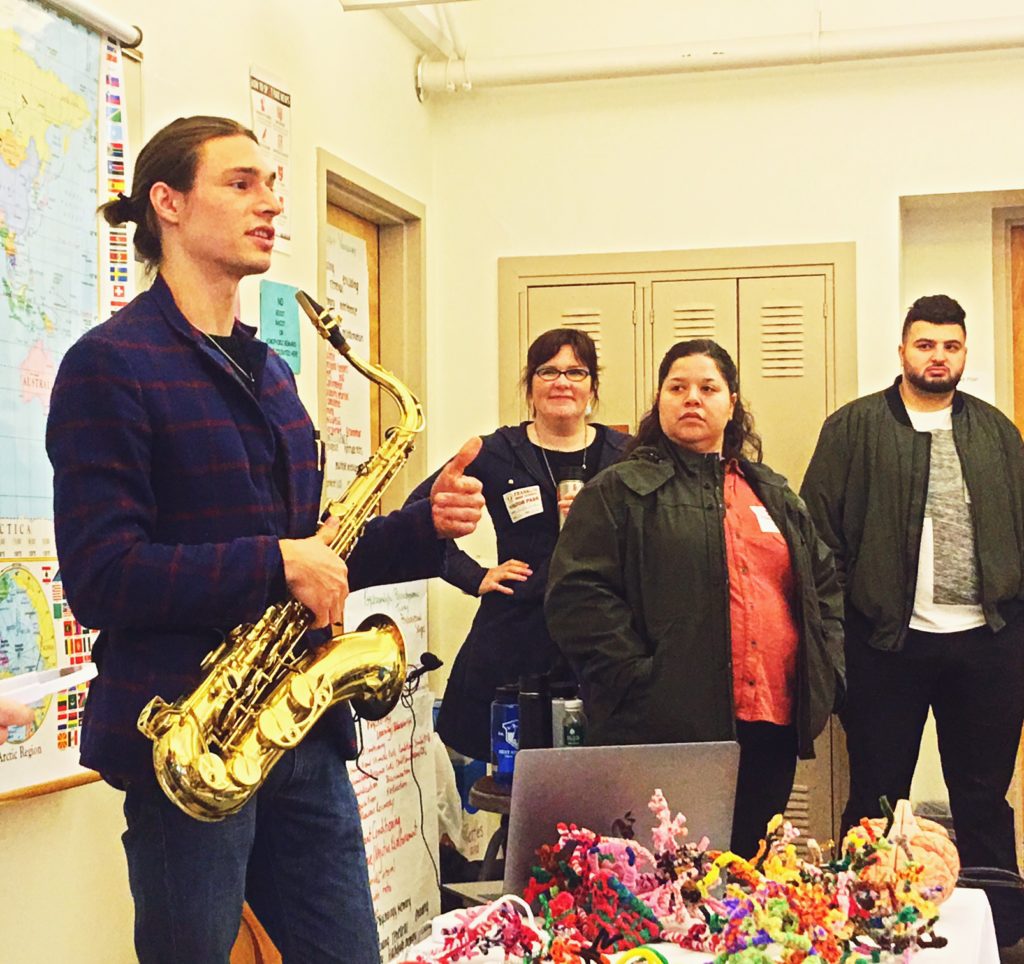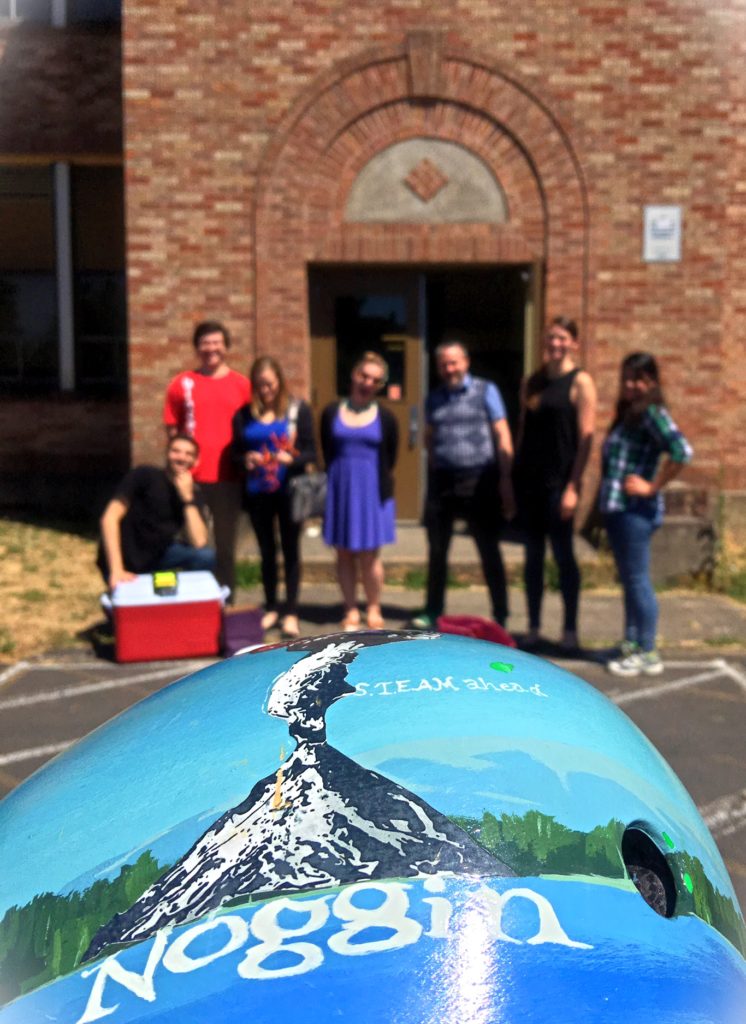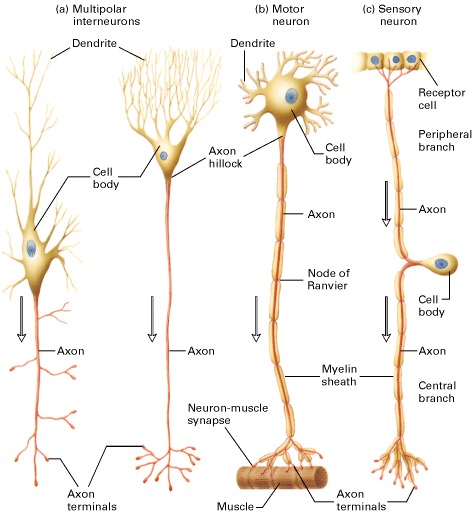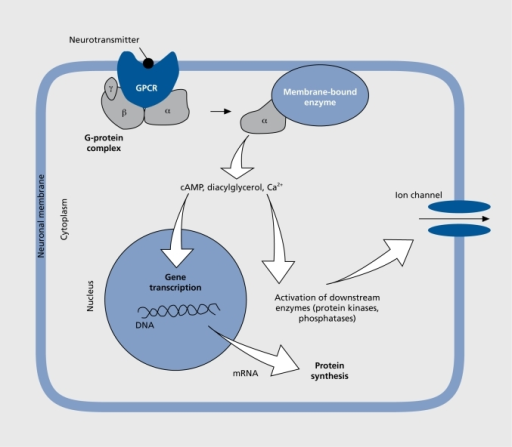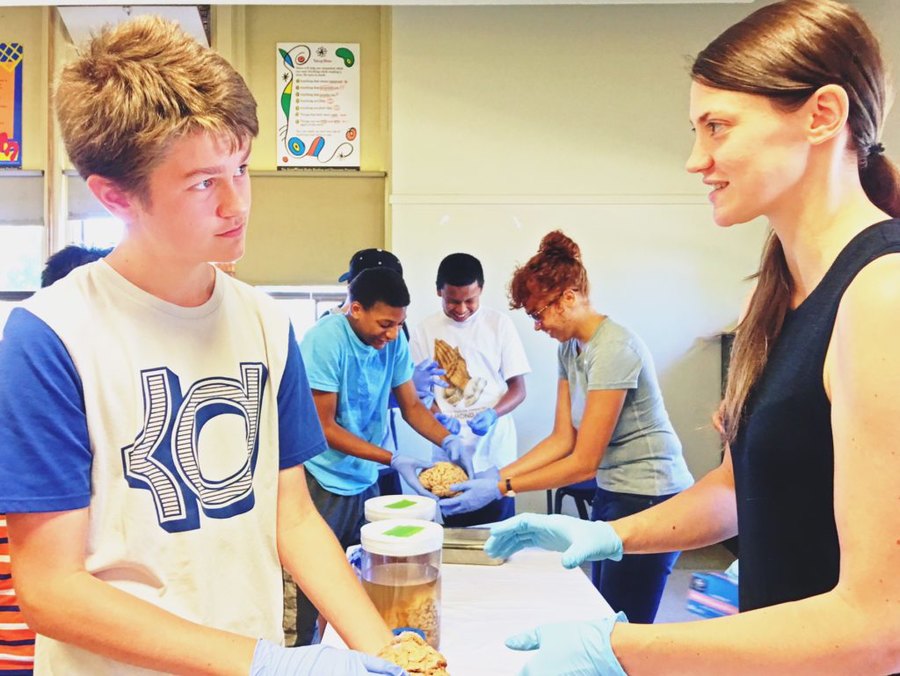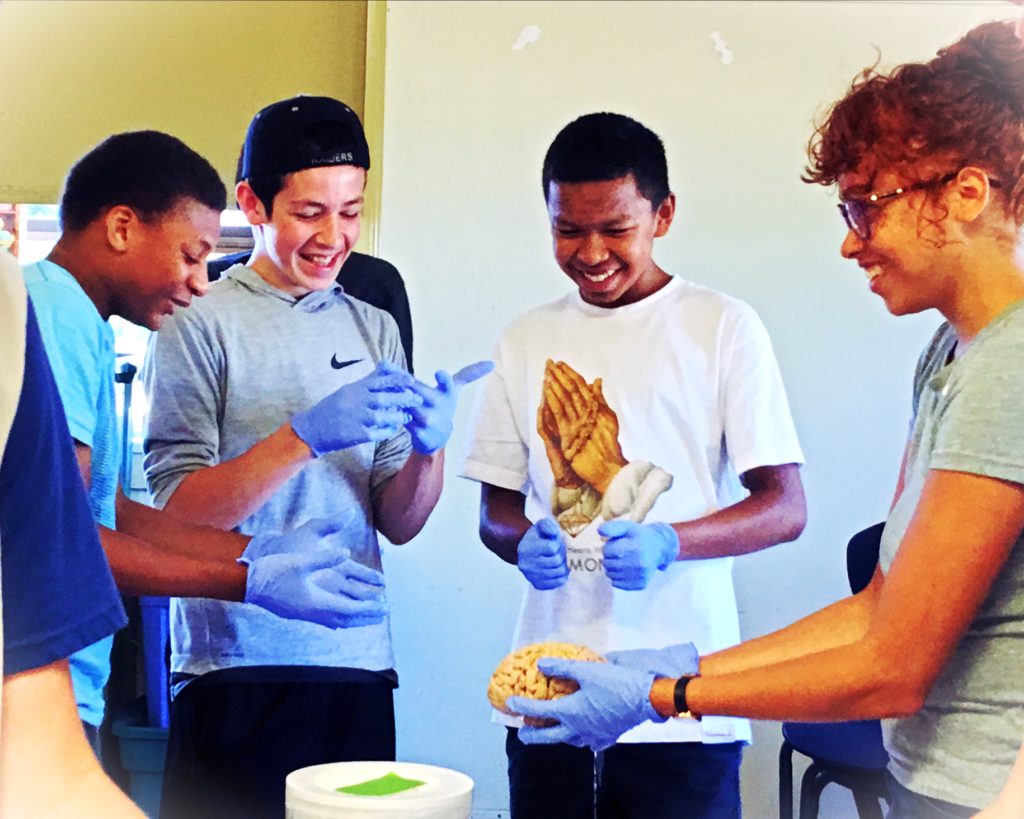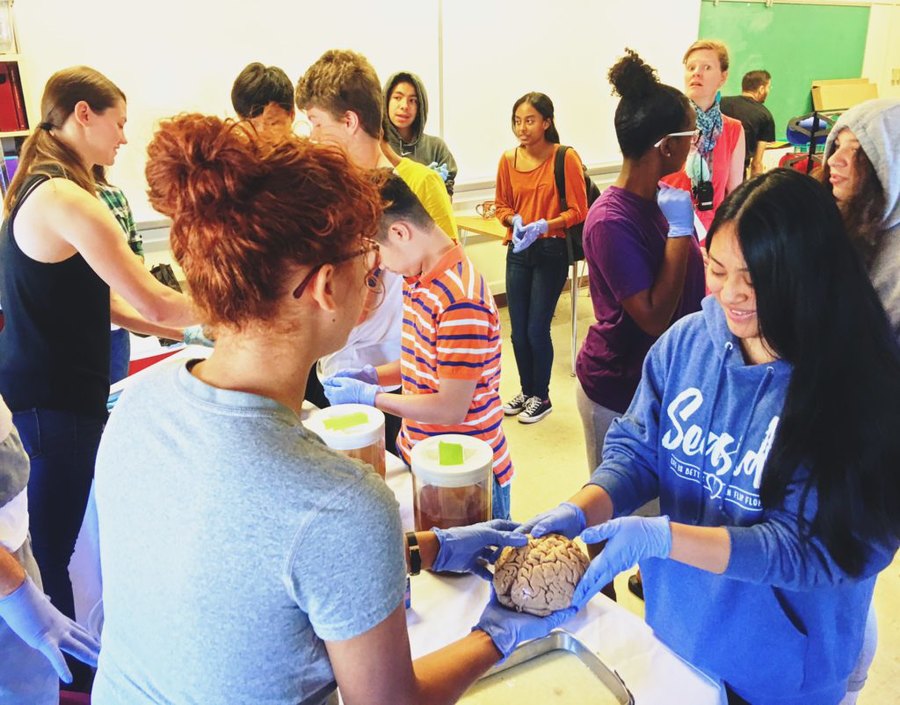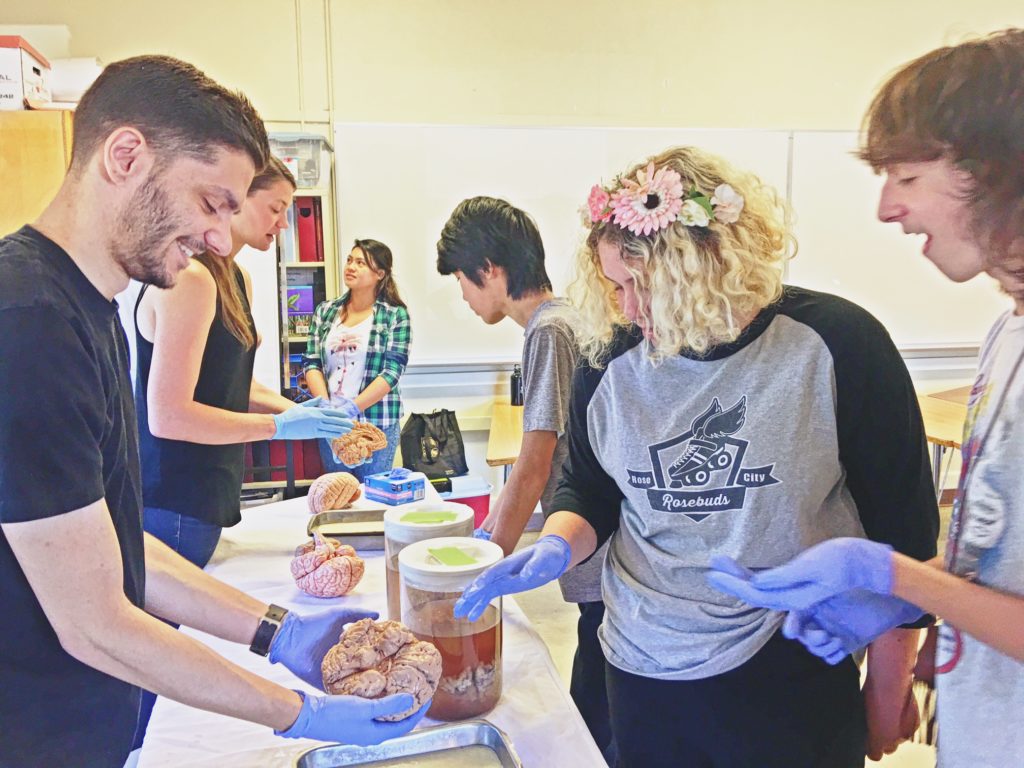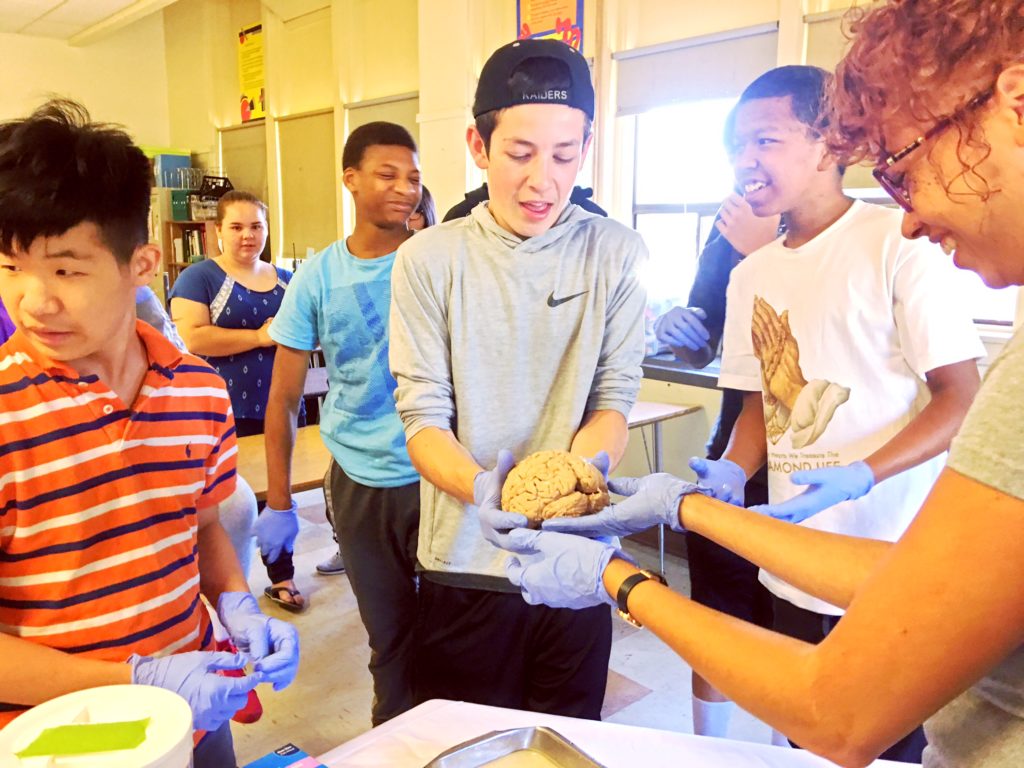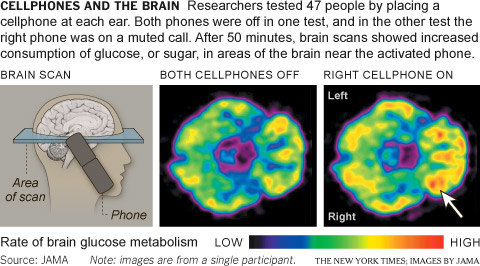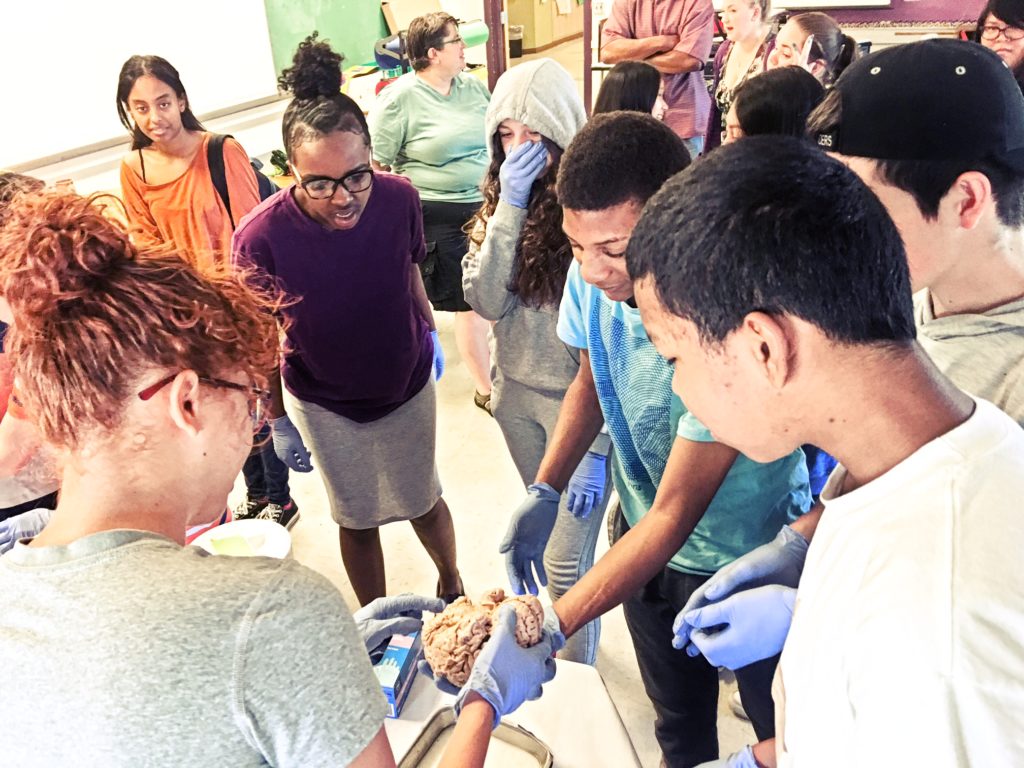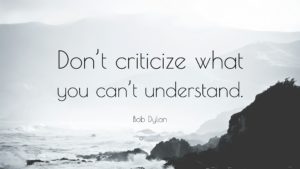Inequity is inherent in U.S. education. Many private schools, and public schools in higher income districts offer multiple electives, and further opportunities for academic, athletic and social engagement. Wealthier families often pay for summer programs, travel, hire tutors, and otherwise supplement school experiences with contacts, experiences and connections that can give their children a leg up…
LEARN MORE: Inequality in Teaching and Schooling
LEARN MORE: American Psychological Association on Inequality at school
SUN (Schools Uniting Neighborhoods) is an innovative Multnomah County managed program offering enrichment opportunities for public school students throughout the year, including summer, and most of what they offer is free and open to all. We love visiting SUN schools, and in fact got our start with art and brain education through a student-driven SUN class we organized at Sabin K-8 back in 2012!
This week we joined the irrepressible and inspiring Lucinda Peterson, a math teacher at Lane Middle School, and her fellow math educators Heather Szabo (also at Lane), Michelle Lefevre (from Robert Gray Middle School) and Erin Mahony (Lincoln High School), and about forty entering Franklin High School freshmen for a busy morning of brain exploration and art! We’d already met Franklin students last summer, and this spring, as well…
LEARN MORE: Franklin and Phineas Gage
LEARN MORE: Frequencies @ Franklin: Your brain on sax!
Franklin High recently completed extensive seismic remodeling (for good reason!), and will re-open for classes this fall. However, we introduced ourselves to students and teachers at the SUN program’s current summer site at Lane Middle School on a bright and sunny Portland day…
The picture above only includes a few of our volunteers, a diverse and accomplished mix of grads and undergrads! We welcomed Mieya Romine, Adam Bishop, Shawna Erickson, Firas Saad, Rebekah Hough, Jordan Ray, Aliese Poole and Jennifer Jensen from Portland State University, Sulema Rodriguez (a Noggin Resource Council member) and Heather Hamilton, also from PSU and the NIH BUILD EXITO program, Rebecca Hood and Jessica Patching-Bunch (another Resource Council member) from OHSU, and three more Noggin Resource Council members, Christina Williams, Joey Seuferling and Ruth Marigomen..!
We all lined up in the gymnasium to say who we are, and described our own interests and research, including details on how we ended up doing what we’re each doing now. New information and ideas, connections, pathways and possibilities – all this is useful, and often actionable, and these “near peer” volunteers may have positive effects on students about to begin their brain-changing freshman year…
We also talked about the extraordinary diversity of brain cells, and their various unipolar, bipolar, and multipolar forms. Some neurons extend from your toe to your brainstem – a single, membrane-bound biological wire, while in cortex you might find 10,000 much tinier cells in an area the size of a grain of rice! Structure determines function, and many of the long neurons, for example, carry critical information about touch and pressure, to quickly update maps of body position in the brain…
LEARN MORE: Overview of Neuron Structure and Function
Students (and Lucinda!) were curious about where all this diversity comes from, and we delved a bit into chromosomes, and genes, and how our own experiences can change both electrical and chemical activity in our brain and body. Chemical changes influence cells at receptors – proteins (encoded by genes) often embedded in cell membranes that bind to hormones (including stress hormones) and neurotransmitters…
When a receptor binds with a neurotransmitter, for example, it temporarily changes that receptor’s shape, and the receptor may release an attached chemical inside the neuron as a result. This newly released chemical (in the diagram above, something known as a G-protein) is then free to bind to another chemical, changing its shape, and letting it now interact with yet another chemical…
These biochemical cascades – started by the initial binding at the receptor – can activate “downstream” chemicals which enter the cell’s nucleus. There they attach directly to our chromosomes, affecting which genes are “expressed,” and thus which proteins actually get built.
LEARN MORE: Cellular consequences of stress and depression
Since neurons are made of proteins, these changes in gene expression (driven by actual experience) change neuron structure – changing what they physically look like and what they are capable of doing…
“I got power, poison, pain and joy inside my DNA
I got hustle though, ambition, flow, inside my DNA…
I transform like this, perform like this…”
–Kendrick Lamar
We then broke down into two classrooms, the first for examining brains up close – and for asking more questions about the brain and behavior. We were thrilled to introduce our two recently donated human cerebrums, courtesy of Medcure, a local company (like BioGift) accepting bodies donated to science…
LEARN MORE: Memories @ MedCure
LEARN MORE: A BioGift of Brains
Students, teachers and volunteers were fascinated by the intricate folds of neocortex, where animate, filagreed networks of neural connections grew and changed throughout a human lifetime, stitching together memories and desires, perceptions and skills…
Both teachers and students were also curious about Franklin’s new “no tolerance” policy for cellphone use during school, and whether this was helpful for brain development. There is research documenting the potential negative effects of excessive cellphone use, including cellphone addiction, sleep difficulties, and reports of increased brain activity just from having a phone next to your head! It’s actually unclear whether the latter effect poses any actual risk to the brain, but it’s an intriguing finding…
IMAGE SOURCE: Cellphone Use Tied to Changes in Brain Activity
LEARN MORE: Cell-Phone Addiction: A Review
LEARN MORE: Cell Phones: The Psychosocial Risks
LEARN MORE: Effects of Cell Phone Radiofrequency Signal Exposure on Brain Glucose Metabolism
However, cellphones are a LOT more socially important for students who’ve grown up texting, Snapchatting and Instagramming their friends than for grown up administrators who may consider these devices distracting toys. They are clearly distracting (for adults too!), but then our brains are motivated by – even addicted to – social engagement with others, and rightly so. We live with people, and there can be great joy, despair, fascination, reward, deception, intrigue and complexity in our human communities that brains need to better understand.
Adolescents, with their rapidly developing frontal lobes, are particularly driven to interact socially – many now through online platforms – and they are undoubtedly acquiring information, perceptions, skills and understanding of their own complex social worlds that should ultimately serve them well…
LEARN MORE: Development of the social brain in adolescence
Students had definite ideas. “We should be able to check phones between classes, or at lunch,” was a common response. “I get anxious,” added one student, “because I might be missing out, and not replying to something important. That looks bad.” And increasing anxiety, if students are prevented from socially engaging online, could potentially disrupt school more than checking Facebook during lunch…
LEARN MORE: NIH on Anxiety Disorders
LEARN MORE: Anxiety Disorder amongst Secondary School Children in an Urban City in Nigeria
In our second classroom, students – and teachers! – were busy crafting their own diverse brain cells out of pipe cleaners!
DISCOVER: Pipe Cleaner Neuron Project Background
CREATE: How to make a pipe cleaner neuron
WATCH: Making pipe cleaner neurons in the classroom
Many thanks to Lucinda, Heather, Erin, Michelle, Amy Slaughter, and the curious students at Franklin SUN!




